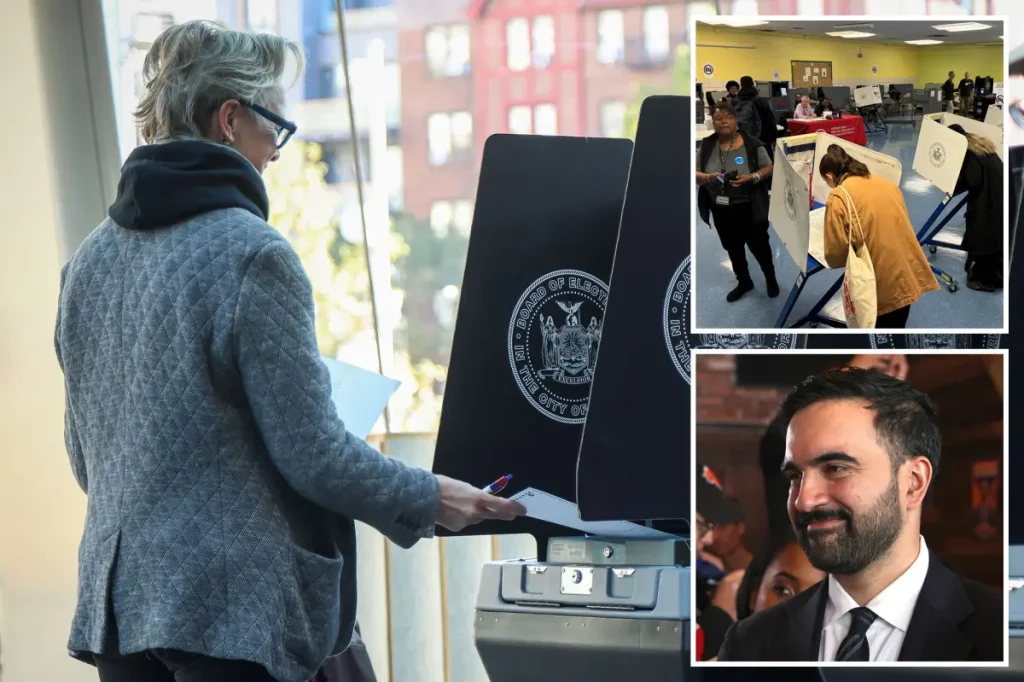Senior Voters Dominate Early Turnout in Heated NYC Mayoral Race
As New York City’s contentious mayoral election unfolds, an interesting demographic trend has emerged during the first days of early voting: voters aged 50 and older are showing up in overwhelming numbers, potentially reshaping the race between progressive candidate Zohran Mamdani and former Governor Andrew Cuomo. This voter turnout pattern could significantly impact the outcome in what has become one of the most closely watched mayoral contests in recent city history, pitting a 34-year-old democratic socialist against a 67-year-old political veteran running as an independent.
The early voting numbers tell a compelling story about who’s participating in this democratic process. According to data from the city’s Board of Elections, approximately 164,000 voters cast their ballots during the first weekend of early voting, with voters over 50 accounting for 95,000 of those votes—nearly 60% of the total. This dramatically outpaces the turnout seen during the June Democratic primary’s first two days, which saw only about 67,000 votes cast. During that primary, Mamdani surprised many political observers by defeating Cuomo to secure the Democratic nomination, largely powered by enthusiasm among younger voters. Now, as the general election approaches, polling experts like Stephen Graves of Gotham Polling suggest this surge in older voter participation likely benefits Cuomo, who performs better with more mature voters. “The reality is Mamdani has very deep support in the young, but it’s not very broad, whereas Cuomo has deep support in the 50-plus and they tend to show up the most,” Graves explained, adding that higher overall turnout generally brings out more moderate, non-partisan voters who may favor Cuomo’s centrist positioning.
The presence of a third candidate, Republican nominee Curtis Sliwa, adds another layer of complexity to this electoral equation. Despite polling consistently in third place and facing calls to withdraw from prominent Republicans like John Catsimatidis, Sliwa has remained steadfast in his candidacy. This creates a potential vote-splitting scenario that could ultimately benefit Mamdani by dividing the more moderate and conservative electorate. As Graves noted, “What we don’t know really is how many of Curtis’ voters decide that he can’t win so they are not going to waste their vote and vote for Cuomo, who they don’t like.” The dynamic is further complicated by the fact that many potential Cuomo voters appear to be motivated less by enthusiasm for the former governor and more by opposition to Mamdani’s progressive platform. This sentiment was echoed by Catsimatidis himself, who, despite being Sliwa’s longtime friend and employer at WABC radio, cast his ballot for Cuomo, explaining: “I voted for Cuomo because in a city that’s 70% Democrat, he’s the only Democrat in the race… The other guy [Mamdani] is a socialist.”
The demographic breakdown of undecided voters offers additional insight into the campaign challenges ahead. According to a recent AARP poll, nearly 80% of voters who remain undecided fall into the 50-plus age category—precisely the demographic where Cuomo appears to have an advantage. While typical mayoral elections in New York City draw approximately 1.1 million voters, Graves forecasts this hotly contested race could attract up to 1.7 million participants. This expanded electorate would likely include more independent voters who might not normally participate in city elections, potentially shifting the balance in Cuomo’s favor. “It is unquestionable that the higher the turnout, the more it favors Cuomo,” Graves asserted, though he acknowledged uncertainty about exactly how high turnout would need to be to make the race competitive between the former governor and the democratic socialist assemblyman.
The early voting patterns have raised concerns among some of Mamdani’s supporters, including state Assemblyman Ron Kim, a frequent Cuomo critic who nonetheless acknowledged the voting trends represent “not a good sign for Zohran.” Kim pointed to a disconnect between progressive campaigns and older working-class Democratic voters, noting, “In my community, working-class older democrats have organized ‘against socialists,’ and there has been no effort to reach out to them by the left. Even though many of them stood with me in fighting against Cuomo in the past, they now stand with him.” This observation highlights the challenge Mamdani faces in broadening his appeal beyond his young, progressive base to reach older voters who traditionally show up in higher numbers for municipal elections.
When confronted with questions about the early voting demographics, Mamdani maintained an optimistic outlook, emphasizing his campaign’s focus on affordability issues that resonate with seniors facing rising costs in the city. “I think we should always celebrate when more New Yorkers are going to the polls,” he stated, adding, “I continue to be confident in our campaign as well as in our outreach to voters above the age of 55, and also, I will not allow myself to be complacent.” This response suggests Mamdani recognizes the challenge before him but believes his message can ultimately transcend age demographics. As the election progresses, both campaigns will undoubtedly intensify their outreach to key voting blocs, with Mamdani needing to expand his appeal among older voters while Cuomo works to solidify his advantage with this crucial demographic. With several days of early voting remaining and Election Day still ahead, this mayoral race remains dynamic, with voter turnout patterns potentially determining whether New York City embraces a progressive new direction or returns to more familiar political leadership.


